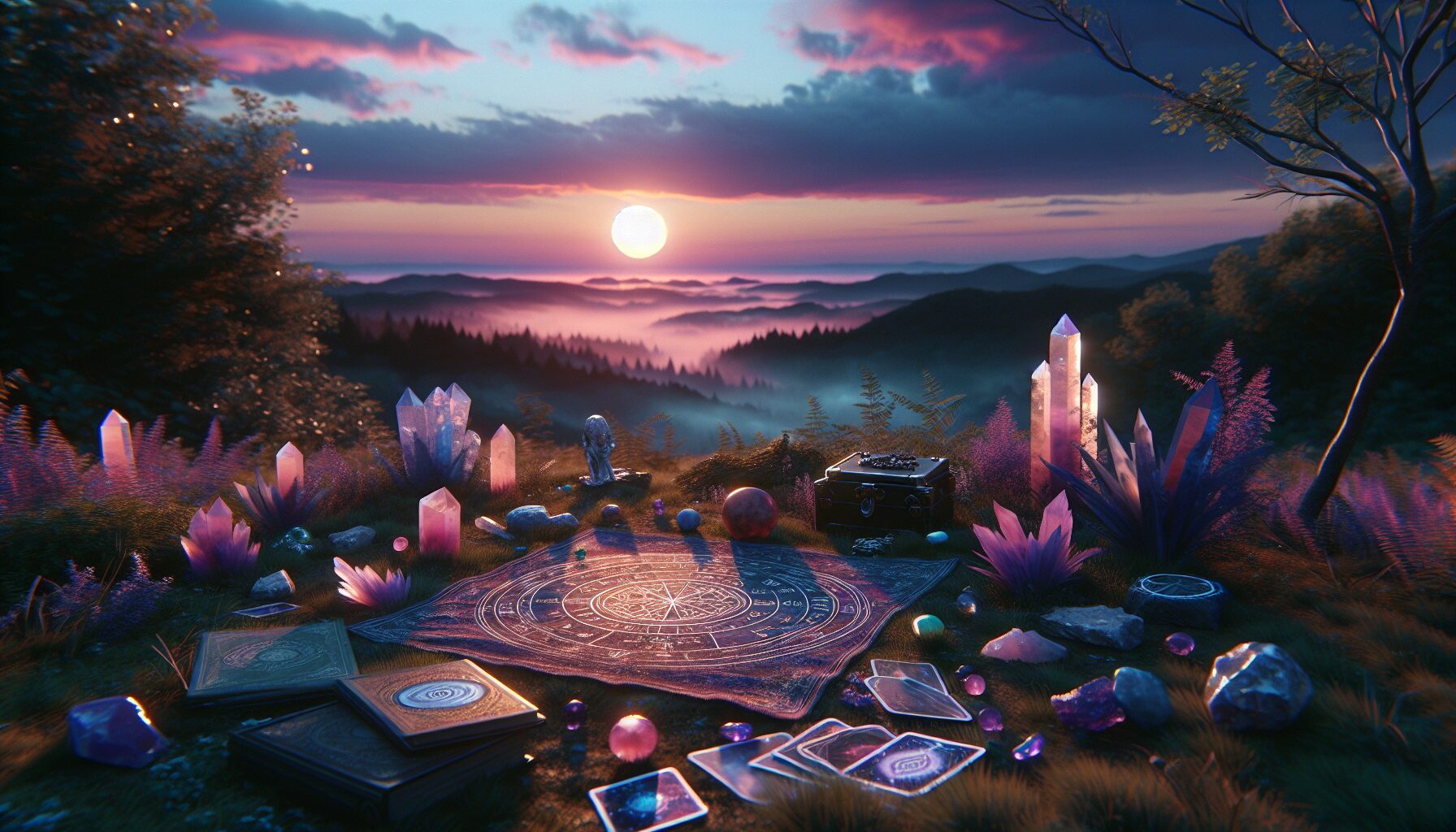As the sun sets and the shadows lengthen, many modern occultists find this liminal time ideal for engaging in rituals that bridge the mystical and the mundane. Twilight, a time of transition, carries ancestral memories of practices repeated throughout history. Here, we delve into some contemporary twilight rituals that continue to inspire and connect practitioners with their spiritual paths.
Understanding the Significance of Twilight
Twilight signifies a magical in-between time; neither fully day nor night. It has always represented a gateway between worlds, a time ripe for reflection and introspection. As Marie-Louis von Franz, a Swiss psychologist and scholar of Jungian psychology, once remarked, “Twilight is that place between where one thing becomes another, and anything is possible.” (Source)
Popular Twilight Rituals
- Shadow Work Meditation: This practice is about delving into one’s subconscious to acknowledge and heal hidden aspects of the self. As shadows blend in during twilight, practitioners sit in meditative states, often outdoors, to merge and reconcile their darker sides.
- Elemental Invocation: In this ritual, practitioners call upon the four elements—earth, water, air, and fire—during twilight. This can involve lighting candles for fire, pouring water for the element of water, standing barefoot on grass for earth, and taking deep breaths for air, typically in an open space where the fading light can be embraced.
- Creating a Sigil: Sigil magic involves creating an abstract symbol that holds personal meaning or intent. With twilight’s fading light, many find it conducive to focus and silently meditate on these symbols, infusing them with purpose and intention.
The Role of Community in Modern Practices
The sense of community and shared experience can greatly enhance individual practices. Many occultists participate in group rituals, often conducted during twilight to harness collective energy. These gatherings may include exchanging knowledge, performing group spells, or simply being present with others who share similar beliefs. As noted by Dion Fortune, a prominent occultist, “Magic is the art of changing consciousness at will,” a process that can be amplified in communal settings. (Source)
Conclusion
Twilight rituals offer a profound way for modern practitioners to bridge the old and the new, the mystical and the tangible. Whether practiced in solitude or community, these rituals remain a testament to the enduring human quest for spiritual connection and transformation.
